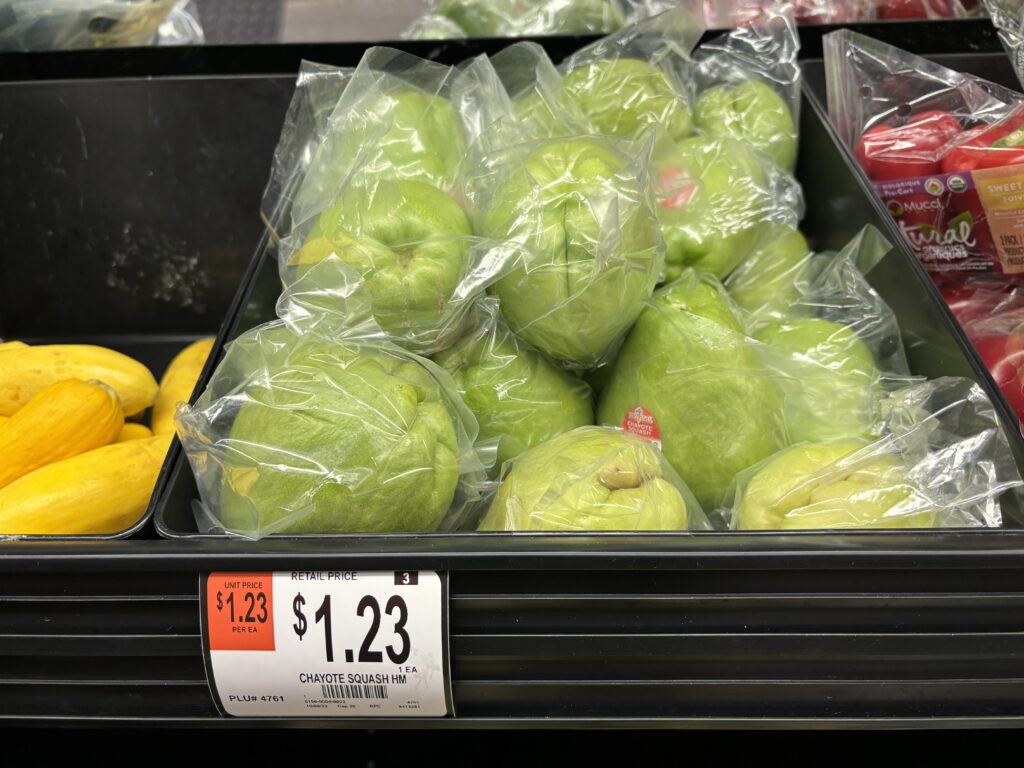
By Lance Hill and Kevin De Santiago
Many people want to grow their own mirliton (chayote) vine but find it difficult to find locally grown mirlitons. Because of their frustration, some people try to grow mirlitons by purchasing and planting one from the produce department in a grocery store. There are two reasons why this is not ideal.
First, all mirlitons sold in grocery stores and markets are imported varieties. They are grown and imported only as produce, just like all the other vegetables that you purchase. The USDA tried to grow these varieties a century ago and concluded that high-altitude plants have tremendous difficulty growing in low altitudes. This is because these varieties have adapted to the altitude, pests, diseases, and ultraviolet exposure in their native environment. The patterns of light and temperatures influence when and if the variety will flower and fruit. Moreover, an imported variety may not have acquired resistance to diseases or disease pressures that occur in its new environment.
All imported mirlitons will sprout and send up a shoot, but most imported mirlitons will not flower and set fruit. We have received reports of this problem from hundreds of growers over the years, and I had the same disappointing experience when I tried to use imported mirlitons to grow a vine.
Second, even if you could grow an imported mirliton, you may introduce new diseases that have devastated mirlitons elsewhere. Local mirliton varieties that are adapted to conditions in the U.S. have been grown for over two centuries in Louisiana and California. These were originally brought from low-altitude coastal areas in the Caribbean and Central America. In horticulture, these local varieties are called landraces— a cultivars that growers have improved by traditional agricultural methods. The Louisiana heirloom mirliton is the U.S. mirliton landrace that has adapted to the regional climate, diseases, and pests because generations of gardeners learned by trial and error. They are a reliable and healthy variety.
But they are vulnerable to new diseases. Many mirliton diseases have not reached the U.S, and some, like the destructive Chayote Mosaic Virus (CMV), are transmitted inside infected mirliton fruit without any sign of infection (seedborne and sapborne diseases). If you purchase an infected imported mirlitons that carries the disease and then plant it, you may spread the disease to the Louisiana heirloom mirlitons. There is no cure for CMV, and you can potentially destroy all U.S. varieties. In Brazil, scientists have recently discovered new fungi that cause anthracnose disease in mirlitons, which is also soilborne and sapborne, meaning that the imported chayote can spread new diseases if planted.
Imported chayote are great for cooking and play an important role in the diet of many Latino and Asian people in the United States. They are also ideal to use for making Creole and Cajun dishes when Louisiana mirlitons are not available. But they were never intended to be used as seed. That’s why we say “eat’em, but don’t plant’em.”
To summarize: Imported mirlitons may not grow and fruit in the U.S., and if they do, they may have disastrous consequences for U.S. mirlitons landraces. It is best to wait until you find one of the Certified Louisiana Heirloom Mirlitons available on the Mirliton.Org Facebook Group.
Read about the USDA’s failed project to introduce high-altitude varieties here.
